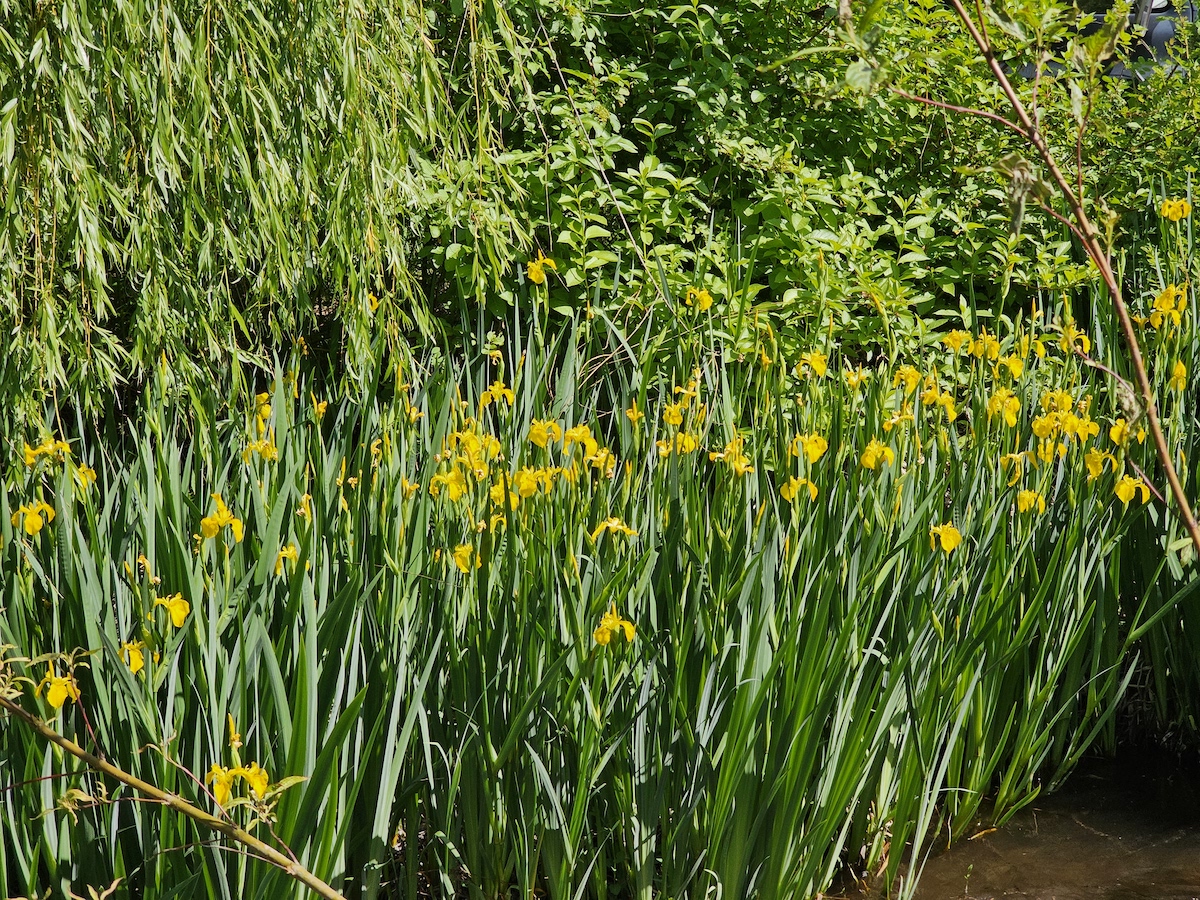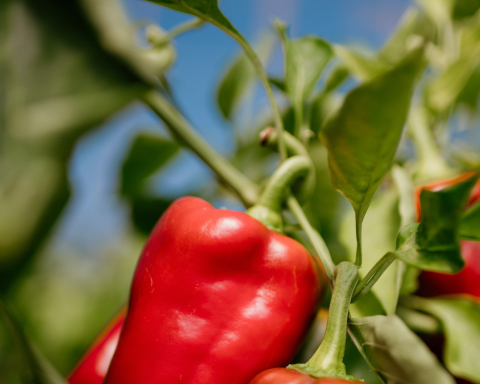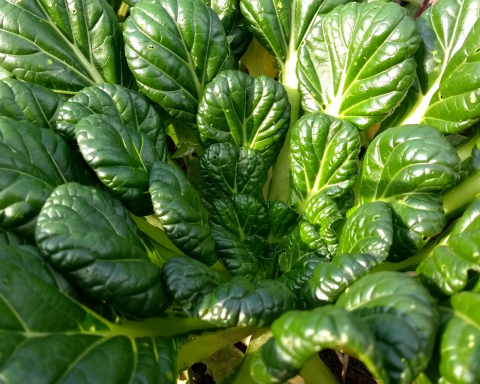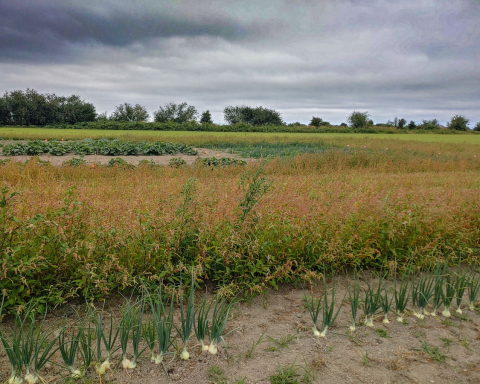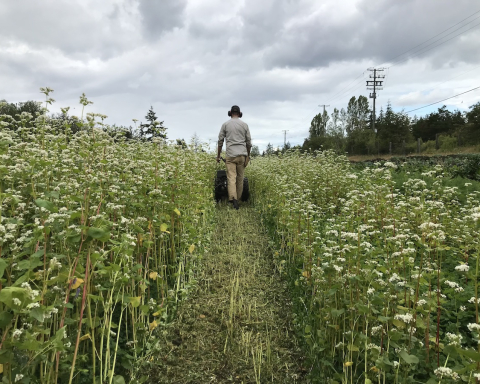Valerie Maida
Conservation and agriculture can sometimes seem to be at odds. Conservation can be seen as trying to prevent development and control activities on farms, while agricultural development of natural areas for new farms can destroy habitats, leading to frustrations on both sides. However, farmers are naturally caretakers of the land, managing the soils and water on their properties to ensure their fields will continue to be productive long into the future. There are many opportunities for conservation groups and farmers to work together that benefit both farms and the natural environment. That’s where the Okanagan Similkameen Stewardship Society (OSS) comes in.
OSS works with private landowners to partner in conservation and enhancement of wildlife habitats on their properties. Through their Wildlife Habitat Steward program, the organisation supports landowners with recognition, technical support in habitat enhancement projects, management plans, and assistance with implementation of best management practices for wildlife on their properties. Being a Wildlife Habitat Steward does not mean farmers can’t “use” their land. Wildlife Habitat Stewards still maintain their agricultural, tourism, and other land use practices on their properties while implementing best management practices for wildlife.
OSS has recently undertaken a large project in Summerland’s Garnet Valley working with a community of private landowners to control yellow flag iris at its most upstream extent in Eneas Creek. Yellow flag iris is an invasive plant from Eurasia and Northern Africa. It was originally used as an ornamental pond plant but with a complete lack of natural controls or predators, it escaped and spread across North America. At some point, the iris was planted near Eneas Creek and it has since proliferated down the creek.

For property owners, the main concern with this invasive plant is that it forms dense mats across and into the water, causing the creek channel to narrow, and significantly increasing flood risk. Yellow flag iris also changes the environment both in the stream and along the banks, reducing the number of insects, which in turn reduces food for fish, birds, and other animals. It is almost unkillable—cutting, digging, and tilling do nothing to stop its growth, and any effective herbicides cannot be used near water. The only effective way to handle large infestations is to smother the plants under heavy impermeable tarps. An infestation like this one can seem impossible to manage because it is spread across so many properties.
To tackle the yellow flag iris infestation, OSS helped to create a community of stewards in the Garnet Valley to work together to do what no one landowner could manage on their own. Starting the project upstream and working downwards, OSS was able to work together with farmers both organic and conventional, as well as homesteaders, hobby farmers and others to eradicate the yellow flag from one kilometre downstream of where the original infestation started, with agreements and plans in place to continue the work for at least another 750 metres. The yellow flag iris isn’t dead yet, but it is covered and has stopped being a seed source for the rest of the creek.
Two of the wonderful landowners that we have had the pleasure of working with are Thomas and Celina Tumbach. They are owners and operators of LocalMotive Organic Delivery service and Garnett Hollow Farm, a ground crop farm tucked alongside Eneas Creek in Summerland’s Garnet Valley. They are strong believers in the organic movement and started LocalMotive nearly 20 years ago in an effort to help develop local food distribution networks and connect organic farmers with consumers in BC. For them, farming organically alongside nature instead of against it just comes naturally.
“The Tumbachs have left a significant portion of their riparian area [dense forested area around a creek or wetland] intact,” says Alyson Skinner, Executive Director with OSS. “Their participation in the program was a natural fit considering their commitment to organics and to working with nature instead of against it.”
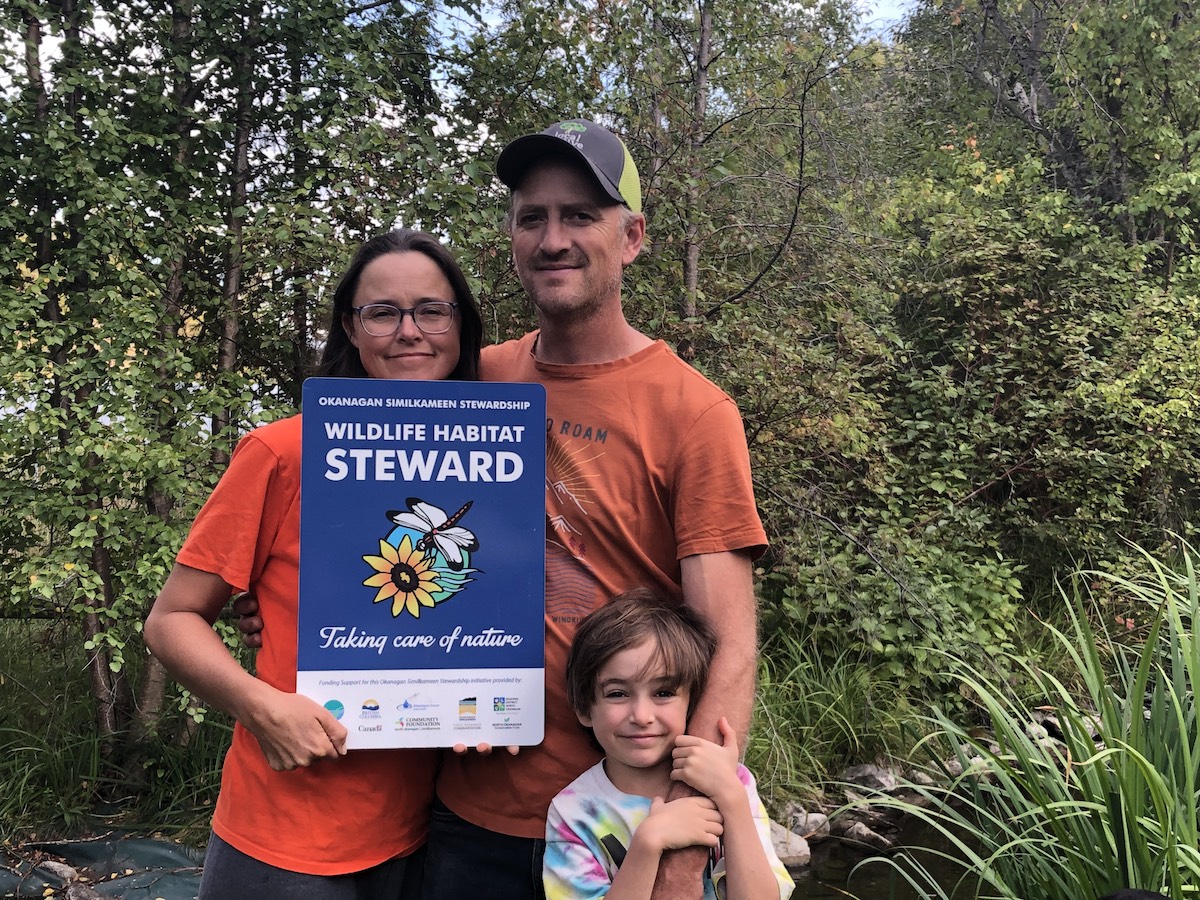
Undeveloped natural areas are highly beneficial around farms. They can help prevent soil erosion, filter chemicals from water runoff, and also help protect against weather events like flooding and high winds. Intact habitats can even help improve overall production on the farm. The diversity of trees, shrubs, and flowers in high-quality habitats maintains higher numbers of native pollinators and other beneficial insects such as lacewings, butterflies, and ladybugs and the additional pollination and pest control comes with little to no outside effort. Awareness and appreciation of the intrinsic value of wild spaces on the farm are starting to gain momentum among farmers.
“Nearly half of the 130 landowners we have participating in our Wildlife Habitat Steward program are growers and producers,” notes Skinner. “Big or small, organic or conventional, they have all taken steps to improve their land stewardship, providing benefits to wildlife and production. Much of the time, like at Thomas and Celina’s, stewardship means they just allow the habitats to exist and contact us for advice or if a concern arises. Other times, we help folks improve habitat by installing nest boxes for owls and songbirds and basking platforms for turtles.”
OSS’s community of stewards in the Garnet Valley started with Steve Lornie and Christine Coletta of Okanagan Crush Pad Winery. Right from the beginning, they wanted to farm their 320-acre Garnet Valley property with as little impact on the land as possible. After going organic and getting the vineyards started they turned their attention to the far west corner that had a fallow hayfield with Eneas Creek running alongside it. Realizing it was too wet for grapes and that habitat restoration was the best use for the area, they contacted OSS for help and signed on to the Wildlife Habitat Steward program.
Over the following three years, over 2,000 native trees and shrubs were planted throughout the hayfield to help return it to the riparian forest it once was. The importance of the project quickly became apparent when, for two years in a row after the restoration started, the floodplain fulfilled its purpose by holding and slowing down millions of litres of water from rushing downstream when Eneas Creek burst its banks during freshet.
Following Okanagan Crush Pad and LocalMotive/ Garnett Hollow, a dozen properties along the Eneas Creek corridor now call themselves Wildlife Habitat Stewards. This collective effort means that over two kilometres of Eneas Creek is being cared for by growers, both organic and conventional, as well as homesteaders and others. In addition to the benefits this provides to the community, it has also created unique opportunities to undertake a shared concern in the watershed.
The stewardship community in the Garnet Valley is a good example of the growing trend among farmers and homesteaders to embrace stewardship of their land and natural habitats. These individuals recognize the importance of working with nature, not against it, in their agricultural practices. Through their participation in programs such as the Wildlife Habitat Stewards, these farmers and landowners have collectively made a significant impact on wildlife in the Garnet Valley while also reaping the benefits of maintaining natural areas around their farms.
Growers in the Okanagan and Similkameen region who are interested in OSS’s Wildlife Habitat Steward program can contact info@osstewardship.ca or 250-770-1467 to learn more about the program, or to arrange a zero-obligation site visit with a biologist to discuss what stewardship could look like for their property.
Valerie Maida is the Stewardship Officer for Okanagan Similkameen Stewardship, a non-profit that works with landowners and managers to conserve and enhance wildlife habitat on their properties. The team at OSS collaborated on this article.
Featured image: Yellow flag iris in bloom. Credit: Okanagan Similkameen Stewardship Society.


